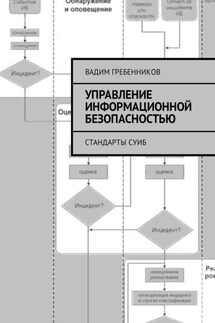IT Cloud - страница 15
* Docker images to view existing containers;
* Docker rmi to remove the image.
But with the growing popularity, the teams became more and more and it was decided to group them into groups, so instead of the simple "Docker run", the "Docker container" command appeared, which has 25 commands in the 19 version of Docker. These are cleanup, and stop and restore, and logs and various kinds of container connections. The same fate befell the work with images. But, the old commands have remained so far due to compatibility and convenience, because in most cases a basic set is required. Let's stop at it:
Starting a container:
docker run -d –name name_container ubuntu bash
Remove a running container:
docker rm -f name_container
Output of all containers:
docker ps -a
Output of running containers:
docker ps
Output of containers with consumed resources:
docker stats
Displaying processes in a container:
docker top {name_container}
Connect to the container through the sh shell (there is no BASH in alpine containers):
docker exec -it sh
Cleaning the system from unused images:
docker image prune
Remove hanging images:
docker rmi $ (docker images -f "dangling = true" -q)
Show image:
docker images
Create image in dir folder with Dockerfile:
docker build -t docker_user / name_image dir
Delete image:
docker rmi docker_user / name_image dir
Connect to Docker hub:
docker login
Submit the latest revision (the tag is added and shifted automatically, if not specified otherwise) the image on the Docker hub:
docker push ocker_user / name_image dir: latest
For a broader list at https://niqdev.github.io/devops/docker/.
Building a Docker Machine can be described in the following steps:
Creating a VirtualBox virtual machine
docker-machine create name_virtual_system
Creating a generic virtual machine
docker-machine create -d generic name_virtual_system
List of virtual machines:
docker-machine ls
Stop the virtual machine:
docker-machine stop name_virtual_system
Start a stopped virtual machine:
docker-machine start name_virtual_system
Delete virtual machine:
docker-machine rm name_virtual_system
Connect to virtual machine:
eval "$ (docker-machine env name_virtual_system)"
Disconnect Docker from VM:
eval $ (docker-machine env -u)
Login via SSH:
docker-machine ssh name_virtual_system
Quit the virtual machine:
exit
Run the sleep 10 command in the virtual machine:
docker-machine ssh name_virtual_system 'sleep 10'
Running commands in BASH environment:
docker-machine ssh dev 'bash -c "sleep 10 && echo 1"'
Copy the dir folder to the virtual machine:
docker-machine scp -r / dir name_virtual_system: / dir
Make a request to the containers of the virtual machine:
curl $ (docker-machine ip name_virtual_system): 9000
Forward port 9005 of host machine to 9005 virtual machine
docker-machine ssh name_virtual_system -f -N -L 9005: 0.0.0.0: 9007
Master initialization:
docker swarm init
Running multiple containers with the same EXPOSE:
essh @ kubernetes-master: ~ / mongo-rs $ docker run –name redis -p 6379 -d redis
f3916da35b6ba5cd393c21d5305002b78c32b089a6cc01e3e2425930c9310cba
essh @ kubernetes-master: ~ / mongo-rs $ docker ps | grep redis
f3916da35b6b redis "docker-entrypoint.s…" 8 seconds ago Up 6 seconds 0.0.0.0:32769->6379/tcp redis
essh @ kubernetes-master: ~ / mongo-rs $ docker port reids
Error: No such container: reids
essh @ kubernetes-master: ~ / mongo-rs $ docker port redis








